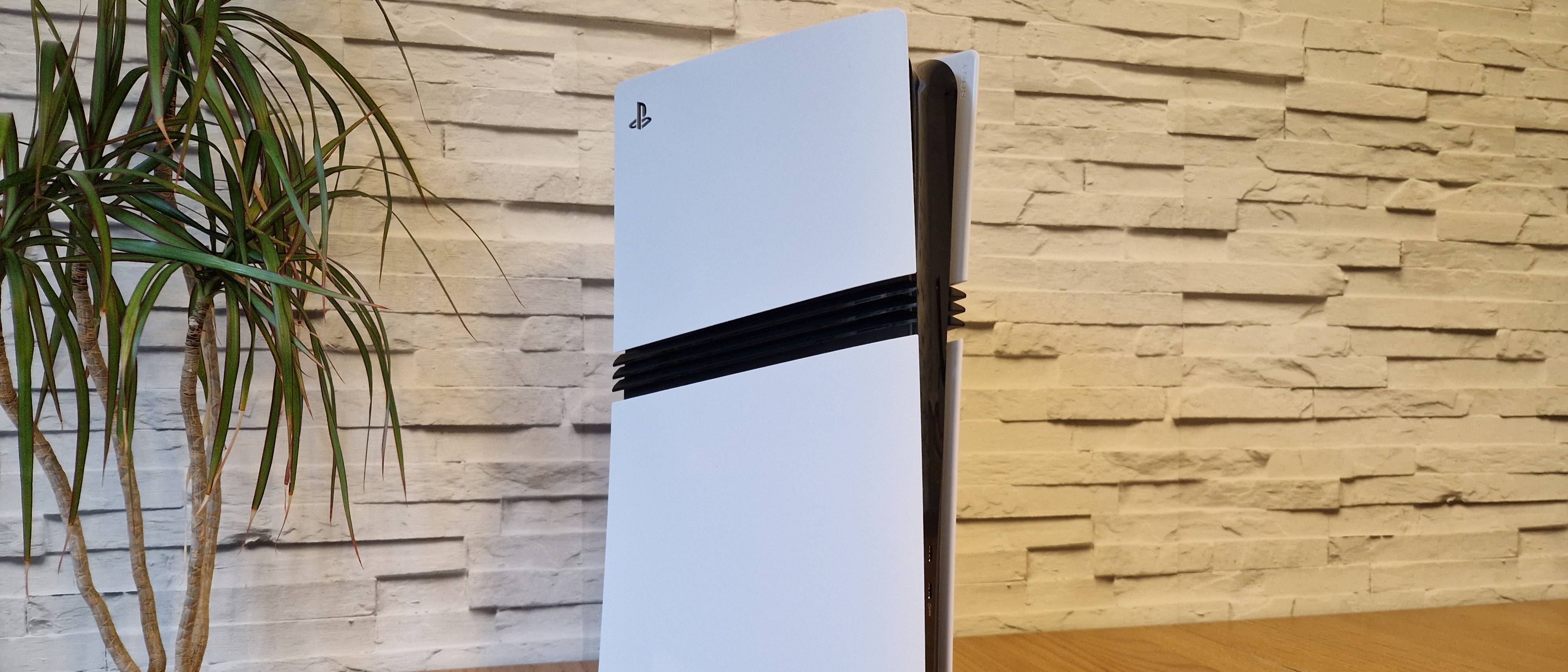TechRadar Verdict
The PS5 Pro is a superb console and now the best PlayStation 5 machine available. The advancements are glorious and bring a new level of immersion and beauty to games, while also boosting performance levels to offer fluid and smooth frame rates and very high levels of image fidelity - at the same time - offering a clear advancement over the base PS5, and will be perfect for those enthusiasts yearning for more from the camps of fidelity and performance. The increase to 2TB of storage and the inclusion of Wi-Fi 7 are very welcome and make tangible operational advancements too. However, the headline graphical upgrades aren’t truly groundbreaking and if you’re not a PlayStation fanatic or graphics obsessive then you can likely skip the Pro. Plus, the exclusion of a disc drive and stand, despite its position as an enthusiast console, is disappointing. But if you have an eye for detail, strive to be at the bleeding edge of console tech, and want to get the most out of this PlayStation generation, then the PS5 Pro is the console to get.
Pros
- +
Provides noticeable performance and visual upgrades over the regular PS5
- +
Having both fidelity and performance due to PSSR is dreamy
- +
Extra brilliant with 120Hz displays
- +
2TB of storage is excellent - plus there’s more usable storage on board by default
- +
Wi-Fi 7 is a welcome boost
Cons
- -
Graphical advancements are broadly subtle and not hugely transformative
- -
No disk drive or stand included is poor
- -
High price tag means its value is questionable
Why you can trust TechRadar
PS5 Pro: Two-minute review
The PlayStation 5 Pro is Sony’s enhanced mid-generation gaming console, and it is categorically better than its PS5 brethren. I’ve spent the best part of a full week with the PS5 Pro now, and have been consistently impressed with its upgrades. Time and again the PS5 Pro has wowed me with incredible graphical quality and wonderfully high frame rates and given me crisper, smoother images and experiences over my base PS5 in almost every game I've tried.
From confirmed PS5 Pro enhanced games, to ‘regular’ PS5 games and PS4 games, and on both a 60Hz 4K TV and 120Hz-capable 4K gaming monitor, I have been blown away by the experience on the PS5 Pro. On a technical level, this is going to be the best way to enjoy the rest of the generation, but there’s a sting in the tail that means that it isn’t quite a slam dunk.
While it delivers on its brief of delivering a mid-gen graphical upgrade - though perhaps not quite to the same degree as the PS4 Pro did when capitalizing on the rise of 4K TV adoption - its graphical boosts, while tangible, aren’t seismic or groundbreaking; certainly not for the vast majority of PS5 players anyway. As such evolutionary-not-revolutionary steps won’t be enough to persuade most.
It also has a price problem which I find frustrating, sad, and baffling in equal measure. At $700 / £700 it is the most expensive Sony home console ever; and this is a mid-generational upgrade, remember - not a wholly new system. It also doesn’t come with a disc drive or a vertical stand which means you’re looking at north of $800 / £800 to even mirror the setup you got originally with a $500 / £450 launch PS5. Considering the PS5 Pro is a premium gaming console and one that will most appeal to PlayStation gaming enthusiasts like myself, it’s hard not to feel disappointed. Pair this with the baffling decision to leave out a disc drive - most enthusiasts are physical media proponents and the most likely to have physical game collections - and the disappointment grows a little more.
The key upgrade is really the convergence of graphical fidelity and performance with games now able to tap into the PS5 Pro’s hardware and features to shine in both ways - at the same time. The wizardry of Sony’s proprietary Playstation Spectral Super Resolution (PSSR) helps enormously in its AI-driven upscaling tech, and the results are glorious. The likes of Horizon Forbidden West and Horizon Zero Dawn Remastered, and The Last of Us Part 1 and Part 2 Remastered, truly shine on PS5 Pro and have new performance modes that run incredibly smoothly at high frame rates and have a level of detail you’d be hard pushed to say weren’t a full-fat fidelity mode.

The boost to ray tracing that’s on offer is absolutely beautiful too. Coming on top of the boosts to fidelity and performance, you can now enjoy some of the best ray-tracing PS5 has to offer in a performance mode, targeting 60 frames per second, which is truly special in games like Marvel’s Spider-Man 2. The boosts to non-enhanced PS5 and particularly PS4 games are harder to discern currently, but the games I've tested show what can be achieved with the PS5 Pro’s hardware.
If you were thinking of upgrading your TV to a 120Hz screen, or have recently got one such monitor or 120Hz 4K TV, then the benefits of the PS5 Pro grow further still with extra modes in the likes of Horizon Forbidden West that offer even more refined balances of graphics and performance to target super-high levels of fidelity and intermediate frame rates such as 40 frames per second. However folks with TVs that aren't 120hz capable can still get great benefits that I can attest to - the moment-to-moment experience of a game’s Performance Pro (or other similarly named) modes is brilliant and means you'll be getting a wonderful image and resolution and, in effect, making the absolute most of your TV’s 60Hz refresh rate.
The aforementioned PSSR is in many ways the headline act of the PS5 Pro’s upgraded feature set with it being the first AI-driven upscaling tech in a Sony home console, and the results discussed above mean that it has great promise and is offering something impressive already. Combined with upgrades to memory, graphics card, storage, and Wi-Fi, the PS5 Pro does offer more than just a niche graphical upgrade package too.
In particular, the boost to 2TB of storage in the Pro makes a huge difference that would otherwise cost around $100 / £100 to add to any other PS5, while the addition of Wi-Fi 7 for better internet connectivity, is welcome, especially considering the Pro starts off life as a digital console.
From a purely aesthetic view, the PS5 Pro console is immediately cut from the PS5 family cloth in terms of design and build and sports all the aesthetic touches to the ports that you’d want from another PS5 console. Coming in at around the same thickness as the PS5 Slim, and the same height as the launch PS5, the Pro is a curvaceous and pretty slick-looking thing.
The sleek white panels - a matte finish, not shiny like the Slim - are elegant, while the black middle and lines of black fins new on the Pro provide excellent contrast. It offers the same ports as the PS5 Slim too so you’re well covered with two USB-Cs on the front, two USB-As on the back, an HDMI, an ethernet, and the power port on the back. Sadly, those panels are not interchangeable with those that fit the PS5 Slim, and it also doesn’t come with a disc drive or a vertical stand which does seem at odds with its positioning as a premium PlayStation-enthusiast console.
The PS5 Pro is the most complete PS5 package now, but its core benefits and upgrades are a little niche, and the advancements are subtle - not ground-breaking - so it’s not going to be a good value investment for everyone.
If you’ve a keen eye for detail, are a PlayStation fanatic who wants to be at the bleeding edge of the brand’s console and wants the most performant PlayStation console going, or you’re a graphics obsessive who wants the best experience going, or are a PS5 user with a new 120Hz-capable gaming TV or PS5 monitor, then the gaming experiences provided by the PS5 Pro are going to be very tempting indeed. For everyone else, it’s just going to be too expensive.
PS5 Pro: Price and availability
- List price: $699.99 / £699.99 / AU$1,199
- Does not include a disc drive or vertical stand
- Launched on November 7, 2024
Since the day of its reveal, the PlayStation 5 Pro’s price has been a big talking point - and it remains so. Cutting to it, $700 / £700 for a mid-generation upgrade console is steep and makes it the most expensive Sony home console ever. It also comes in at $200 / £220 more than the list price of the PS5 Slim, the current ‘base’ version of the console.
By comparison, the PlayStation 4 Pro launched at the original PS4’s price which felt right - especially given the base console’s simultaneous permanent price drop. If the PS5 Pro’s price had come even a little closer to the PS5’s price ($499.99 / £479.99) then this new console would be seriously tempting, and more so for existing PS5 owners.
The extra sting in the price department is that the PS5 Pro console does not come with a disc drive or vertical stand. The latter Sony has previous form with in regards to the PS5 Slim also not coming with one, but the lack of a disc drive, when positioned as a premium, enthusiast console is a big disappointment - and a bit baffling, despite being offset by some of the other PS5 Pro specs on offer.
A welcome point in this category though is, unlike the PS5 at launch, the PS5 Pro is widely available everywhere at time of writing. PS5 Pro pre-orders briefly sold out at PlayStation Direct on the day they started (September 26), but since then stock at Sony’s own storefront and other retailers has remained steady and readily available.
PS5 Pro: Specs
| Price | $699.99 / £699.99 / AU$1,199 |
| Dimensions (WxHxD) | 15.2 x 3.5 x 8.5in / 388 x 89 x 216mm |
| Weight | 6.8lbs / 3.1kg |
| Storage capacity | Custom 2TB SSD |
| Storage expansion | M.2 NVMe SSD slot; external storage via USB |
| Connectivity | WiFi 7, ethernet, Bluetooth 5.1 |
| CPU | 8 core / 16 thread AMD Zen 2 |
| GPU | 16.7 TFLOPs, AMD Radeon, RDNA-based graphics engine |
| Memory/RAM | 16GB GDDR6 / 2GB DDR5 |
| Upscaling | PSSR (PlayStation Spectral Super Resolution Upscaling) |
| Ports | 1 x HDMI 2.1, 1 x Ethernet, 2 x USB-C, 2 x USB-A |
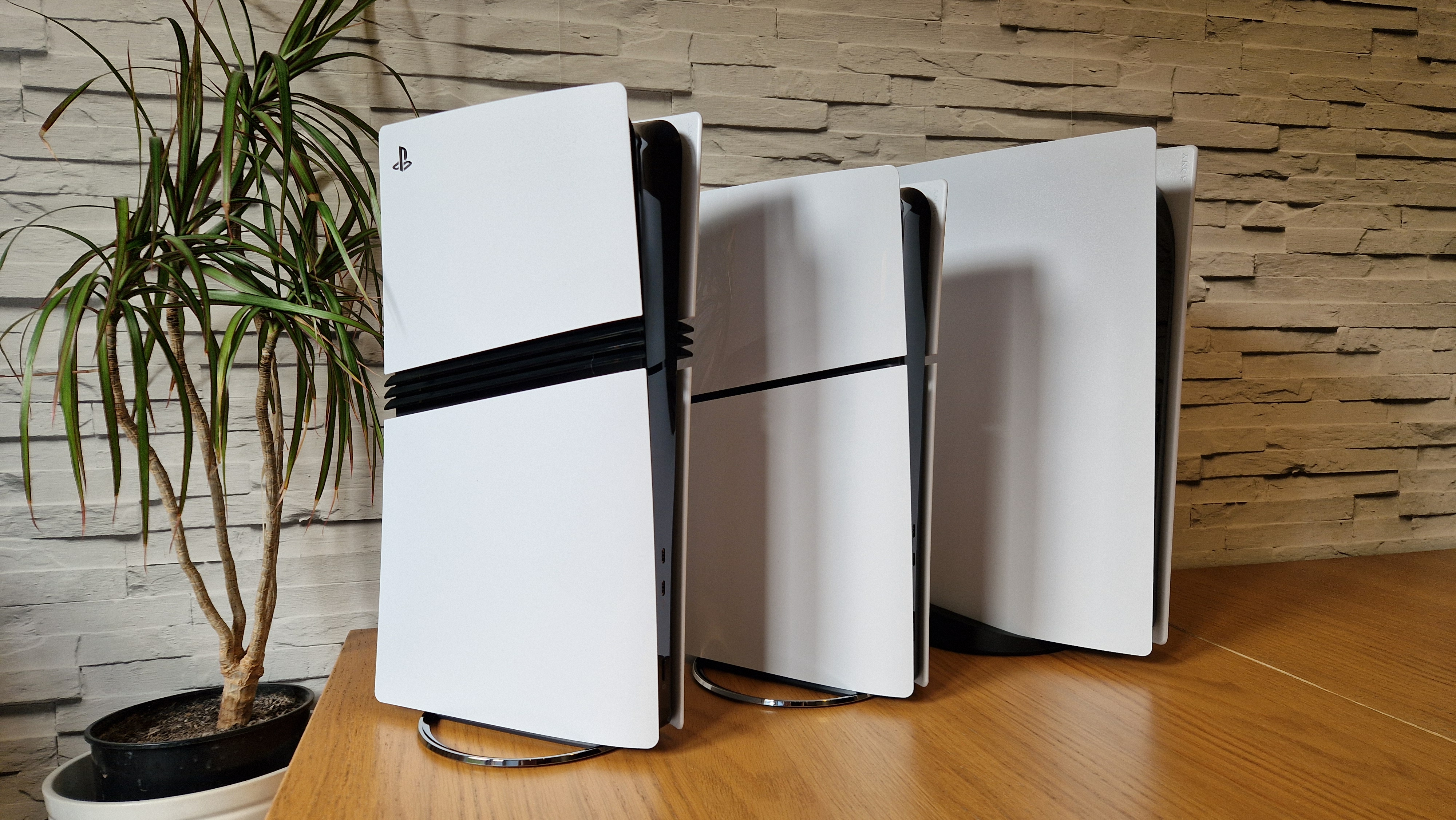
PS5 Pro: Design and features
- Slick design form and chic new take on the PS5-family aesthetic
- Digital console with no disc drive by default
- Updated console covers aren’t interchangeable with existing PS5 plates
The overall design of the PS5 Pro is very in keeping with the PS5 generation of console and accessories; a symphony in black and white curves, but done in its own style that’s both fresh and new but also familiar. The white panels are not as shiny as they are on the PS5 Slim, instead having a more matte finish, while the fins that split the console across its middle are pretty striking from a design point of view and one that I really quite like, providing a stylish flash of black across the sea of white.
The form and overall build share features with the original launch PS5 and the newer Slim model, too. The four-sectioned exterior and overall slender form is very reminiscent of the PS5 Slim, while the Pro comes in bigger than that standard console, and is just about as tall as the original PS5. In cold hard numbers, the PS5 is 15.2 x 3.5 x 8.5in / 388 x 89 x 216mm (WxHxD) in size and weighs 6.8lbs / 3.1kg.
In the box, in addition to the console itself, you get a standard DualSense Wireless Controller, a power plug for your region, an HDMI 2.1 cable, a USB-C to USB-C cable for the controller, and all the necessary paperwork.
The PS5 Pro is a digital-only console by default meaning there’s no disc drive included. This needs to be bought separately and applied as you would on the PS5 Slim - fortunately, the Pro is compatible with the pre-existing PS5 disc drive. There’s also no vertical stand included so the PS5 Pro is also a horizontal console by default with the squat version of the detachable legs included in the box.
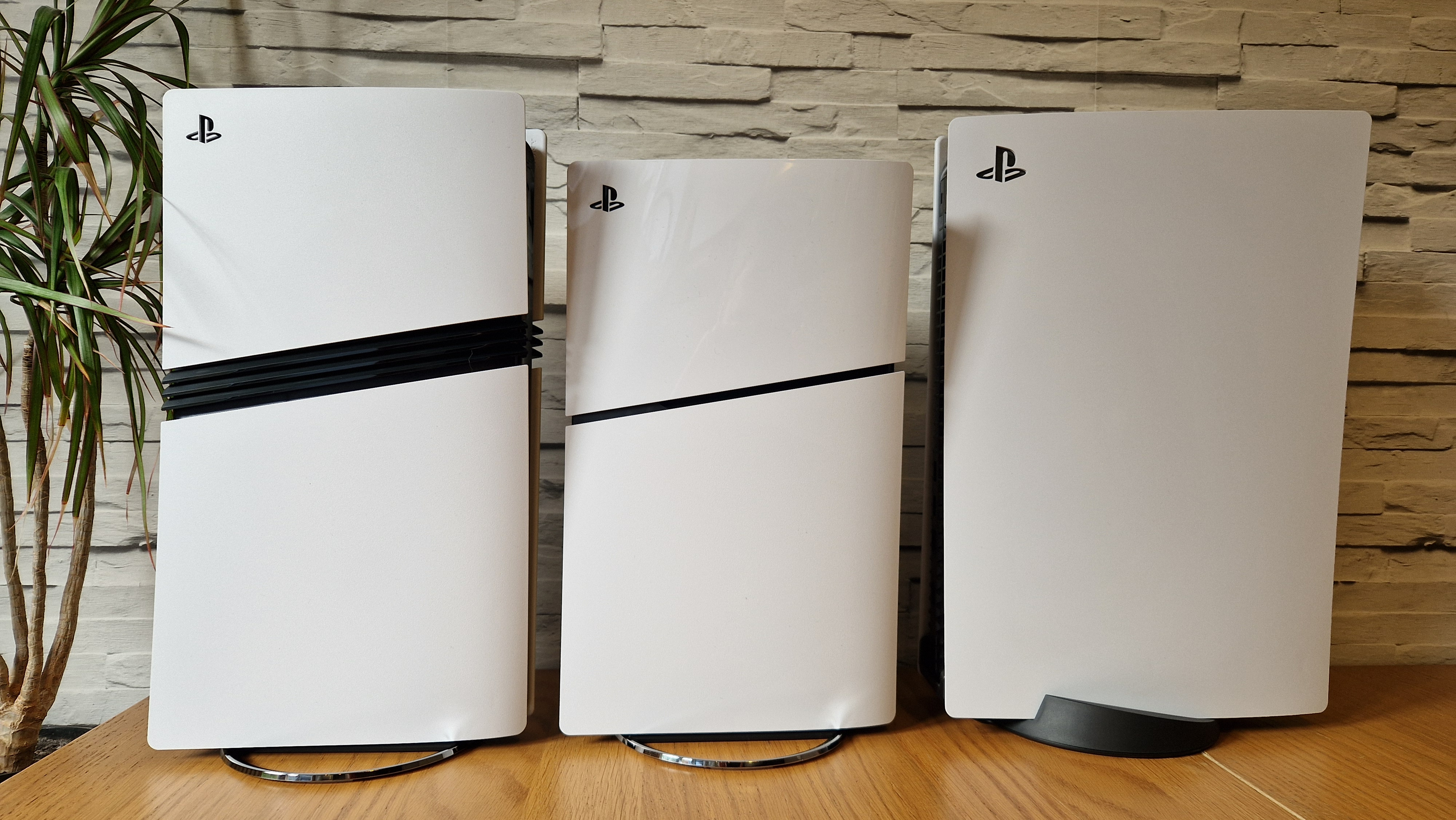
The PS5 Pro follows suit with the PS5 Slim by offering two USB-C ports on the front of the console toward the power button, and where the PS5 Pro’s LED lights are too (i.e. not at the ‘flare end’ as on the launch PS5). On the rear, it’s a more familiar situation to those with any PS5 with the power port, HDMI port, two USB-A ports, and an ethernet port finishing the set. The arrangement of the ports is also more in line with the PS5 Slim however, with the HDMI port further up or the left-hand side (depending on your view) compared to the launch PS5.
The shell of the PS5 Pro is divided into four plates - each named after a PlayStation shape to ensure you don’t ever mix them up, and all are removable with a similar level of force as the other PS5s. It is a great shame, however, while the arrangement of the PS5 Pro generally means that the larger lower panels are exactly the same as the PS5 Slim - a fact reinforced by the disc drive’s compatibility - but the smaller, top panels aren’t the same size which is a great shame. I tested this myself to confirm it, so fans who want to adorn the Pro in their choice of colorway will likely have to wait for Pro-specific panels to become available.
Under the console covers, the PS5 Pro has the same PS5 SSD bay that the previous models had and can be engaged with in exactly the same way too as I experienced by installing my Sabrent Rocket 4 Plus SSD during testing.
When you boot the PS5 Pro up, you’ll be greeted by a user interface that is exactly the same as the other PS5 models. It’s a slick and easy-to-navigate setup process as well as a wider layout to move around, and aside from a few more menu options and toggles, it’s identical and will be very familiar to current PS5 owners. If you need to transfer data from a PS4 or another PS5 to get going, then there’s a simple process to do so when first using the Pro.
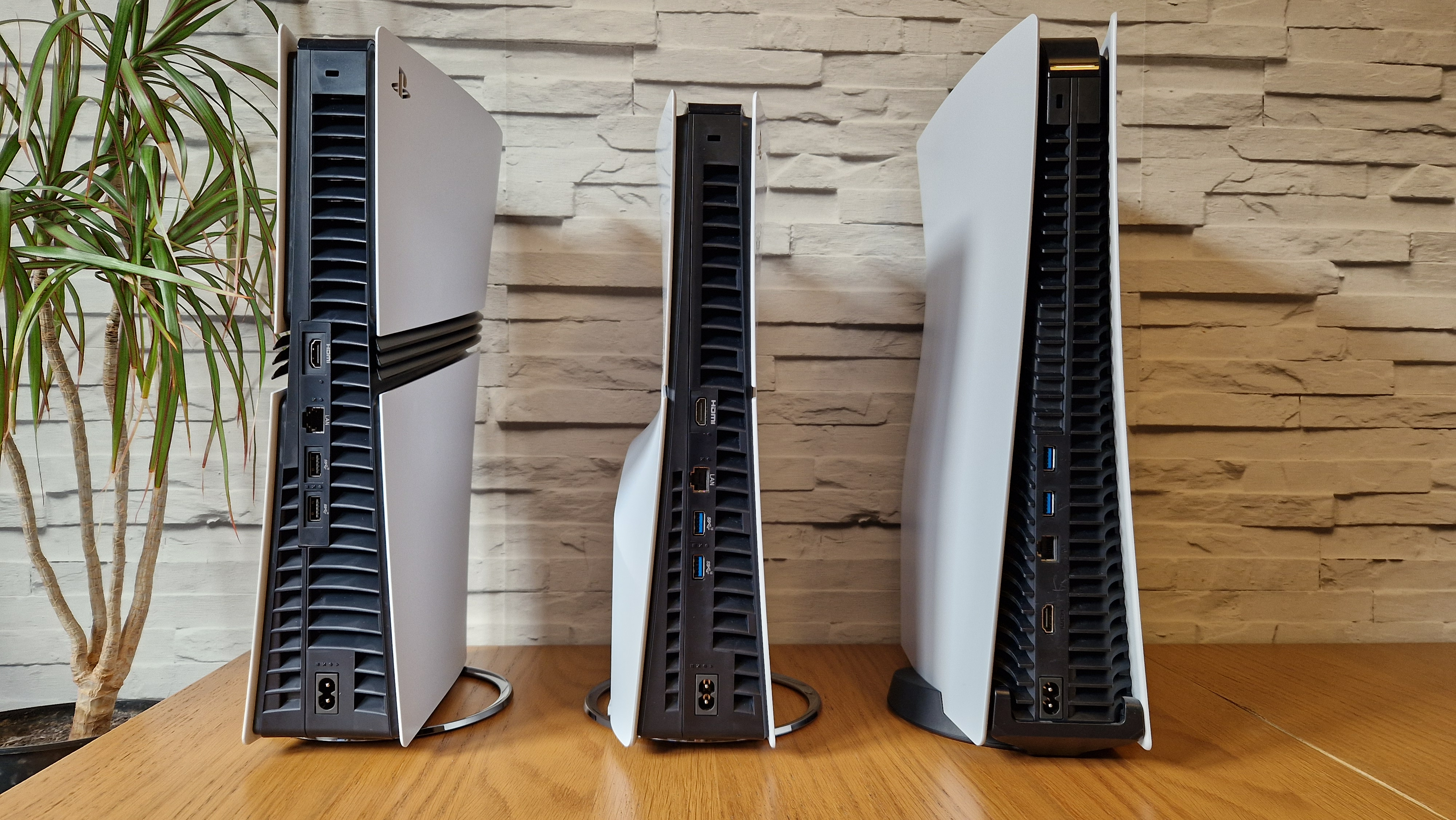
PS5 Pro: Performance
- Excellent performance blending fidelity and performance simultaneously...
- ...however, advancements aren't groundbreaking or revolutionary
- Supporting specs offer further benefits
The proof was always going to be in the performance and graphics pudding, so I installed a whole host of games on the PS5 Pro and my regular PS5 to compare the differences. So far in my testing, I've seen impressive things in those enhanced games I've been able to run.
The effect of the beefier GPU, and the impact of PSSR is tangible and genuine, and it clearly helps developers enhance their games to offer their definitive versions. It’s an exciting proposition for the remainder of the PS5 generation and I already have high hopes for Sony's first-party studios and games like Marvel's Wolverine, and whatever is coming next from Naughty Dog, et al.
The PS5 Pro allows the Northlight engine in Alan Wake 2 to really shine. Instead of adding any more modes, the game takes advantage of the Pro by offering boosts to its quality and performance modes through increased ray-tracing effects, and increased detail. The boost to both modes compared to my base PS5 was immediately noticeable. Ray tracing, reflections, and lighting are all greatly improved in quality mode, while visual boosts and framerate smoothness combine in performance mode.
Horizon Zero Dawn Remastered immediately feels like a game built (well, rebuilt) for PS5 Pro. The moment I booted into the game and started enjoying the cutscenes and getting into the action, I was knocked down by the gorgeous lighting, fabulous reflections, lifelike water and hair detail, and an overall image quality that was stupendous.
This was the case in both games’ ‘Pro’ version of the existing Resolution and Performance graphics settings. Despite the lack of description in the menu as to exactly what was happening in each, I found the Favor Performance Pro to be the best way to enjoy the game: blending the brilliant upgraded visuals and effects with a smooth, high frame rate gave me a brand new experience in Horizon that I’d never had before.
A third setting is available; a Balanced Pro version does exist on 120Hz capable displays that seem to enable the Pro to get higher frame rates than 30fps while knocking only a bit of quality off (so probably a 40fps mode, something made possible, and excellent, with Variable Refresh Rate) to get even more of the best of both worlds should the display be the right match.
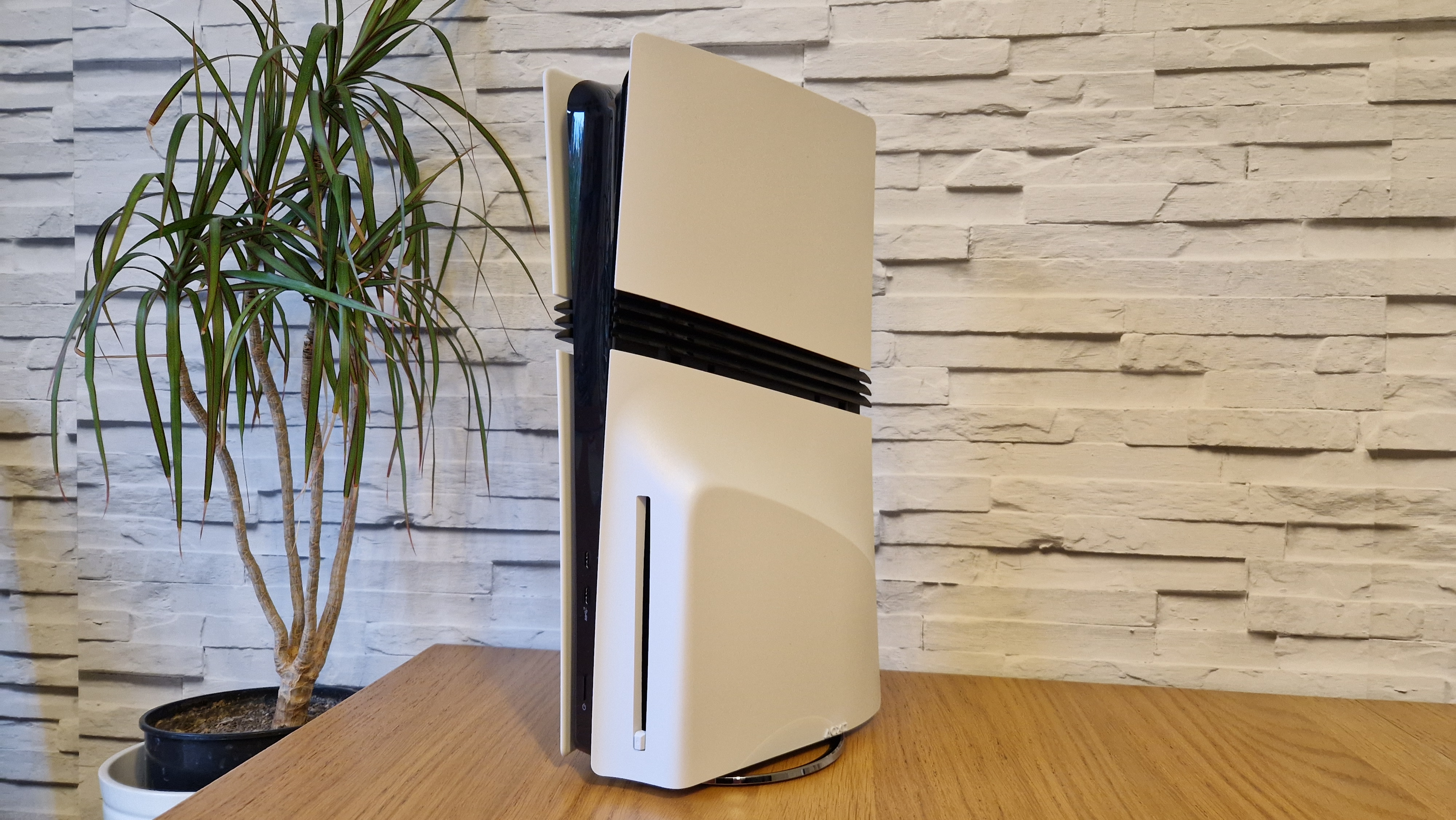
In Horizon Forbidden West, the Resolution and Performance Pro modes remain the same as in the remastered first game, but the Balanced Pro mode is described as very high fidelity at 40fps when playing on a 120Hz-specced display. When playing on my gaming monitor that is HDMI 2.1 capable, this was perhaps my favorite setting of the bunch on both games.
The Last of Us Part 1 and The Last of Us Part 2 Remastered are both brilliant too. The games share identical display options and respond and present themselves in the same way. The new ‘Pro’ mode is an absolute dream and now my favorite way to play these games and experience their worlds. This mode renders the game at 1440p, then uses PSSR to upscale to 4K and targets 60fps. The results are spectacular, and I really had difficulty telling the difference between the overall image quality of the Pro mode with the PS5’s Fidelity mode. World details such as foliage, lighting, and reflections are extra beautiful and things like the details on Joel and Ellie’s backpacks are crisper than ever - all while running at a smoother, higher frame rate.
Zipping around New York in Marvel’s Spider-Man 2 couldn’t possibly have felt or looked better but here we are - the game is staggeringly brilliant on PS5 Pro. The two settings - Fidelity Pro and Performance Pro are both beautiful on PS5 Pro. The former offers incredible ray-tracing, reflections, and overall sharpness, with a few options to change the intensity of some options which can be altered to gain some performance back.
The latter mode, is also something else, though. Offering a smooth 60fps while retaining the image quality of standard (PS5) fidelity mode through PSSR, it presents an extraordinary combination of graphics and performance - and all ray-tracing features are on by default in this setting.
Not to be outdone by its studio-mate, Ratchet & Clank: Rift Apart is also wonderful to play, and just look at on PS5 Pro. The game features the same two settings as Marvel’s Spider-Man 2 (but one fewer ray-tracing settings, the reflections and interiors) with the Performance Pro mode being a standout once again with all ray-tracing features present and PSSR doing some excellent heavy lifting to create a fantastic image, and experience.
I have taken Demon’s Souls for a quick spin around the block too which is excellent in its dedicated PS5 Pro mode - it’s literally called ‘PS5 Pro’. Comparing it to the cinematic and performance modes that remain in the game, it’s hard to tell the difference between the overall image quality of the former, and the smooth frame rates of the latter in the dedicated Pro mode.
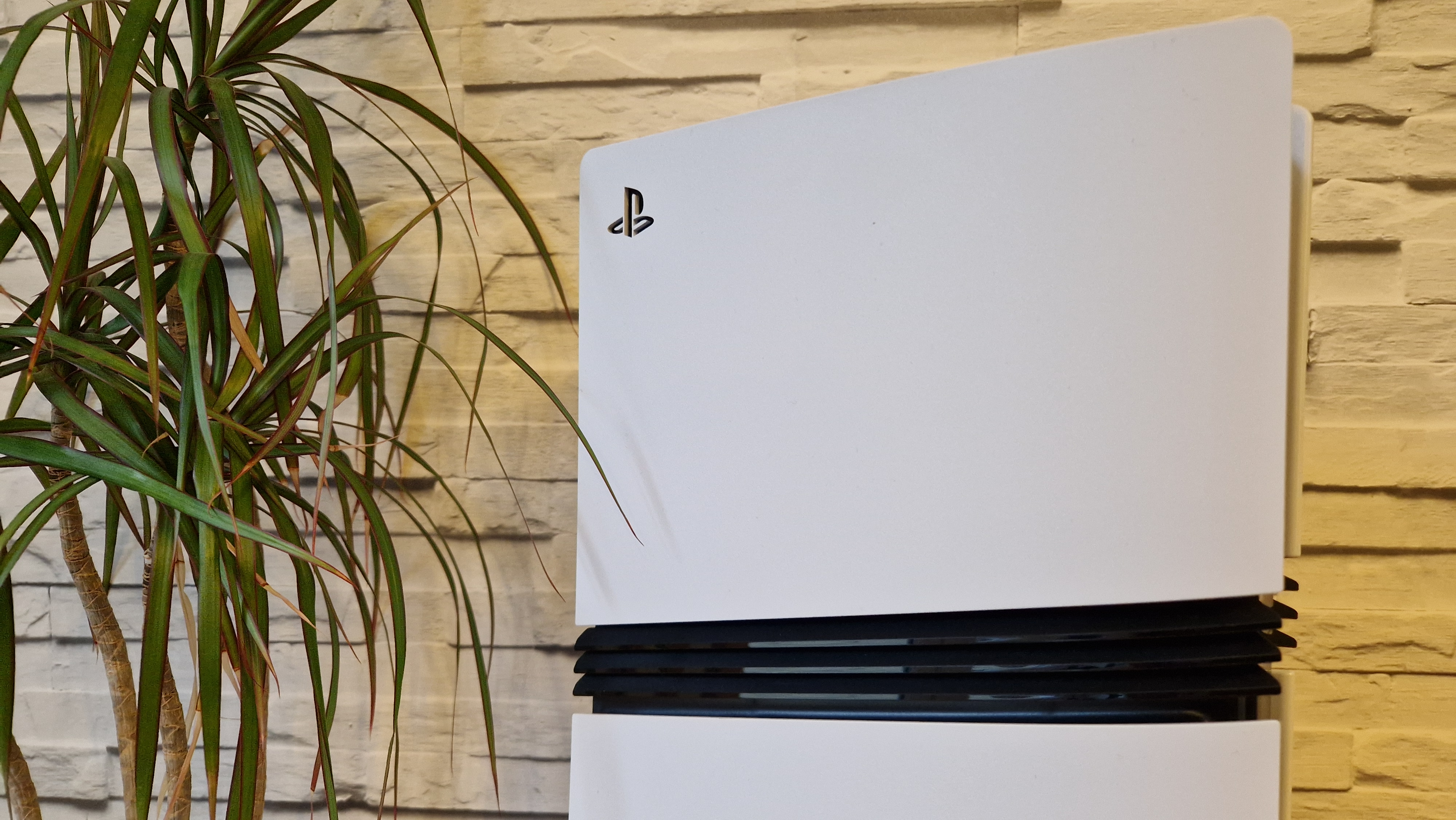
It’s also worth noting that the PS5 Pro, during the above extensive game testing, doesn't blow as loudly as its mid-gen predecessor - the PS4 Pro - did compared to that generation’s base console. I have found the PS5 Pro to run no louder than the base PS5 at its loudest, and actually quieter a lot of the time.
These are just some of the games I’ve had the chance to test so far - and they paint a special picture looking forward to the full list of enhanced games, as well as those yet to come out. The fact remains that if you're playing a game that’s been enhanced for PS5 Pro, you absolutely will get an enhanced experience - the Pro is noticeably and clearly better, making games look even more stunning and run super fast and smooth, simultaneously. We can now have the best of both worlds, and the results often feel like playing the definitive version of games. This is especially the case if you have a 120Hz-capable display that can unlock any balanced or 40fps modes too - this is the point at which the PS5 Pro’s impact and performance can offer more and be even more compelling.
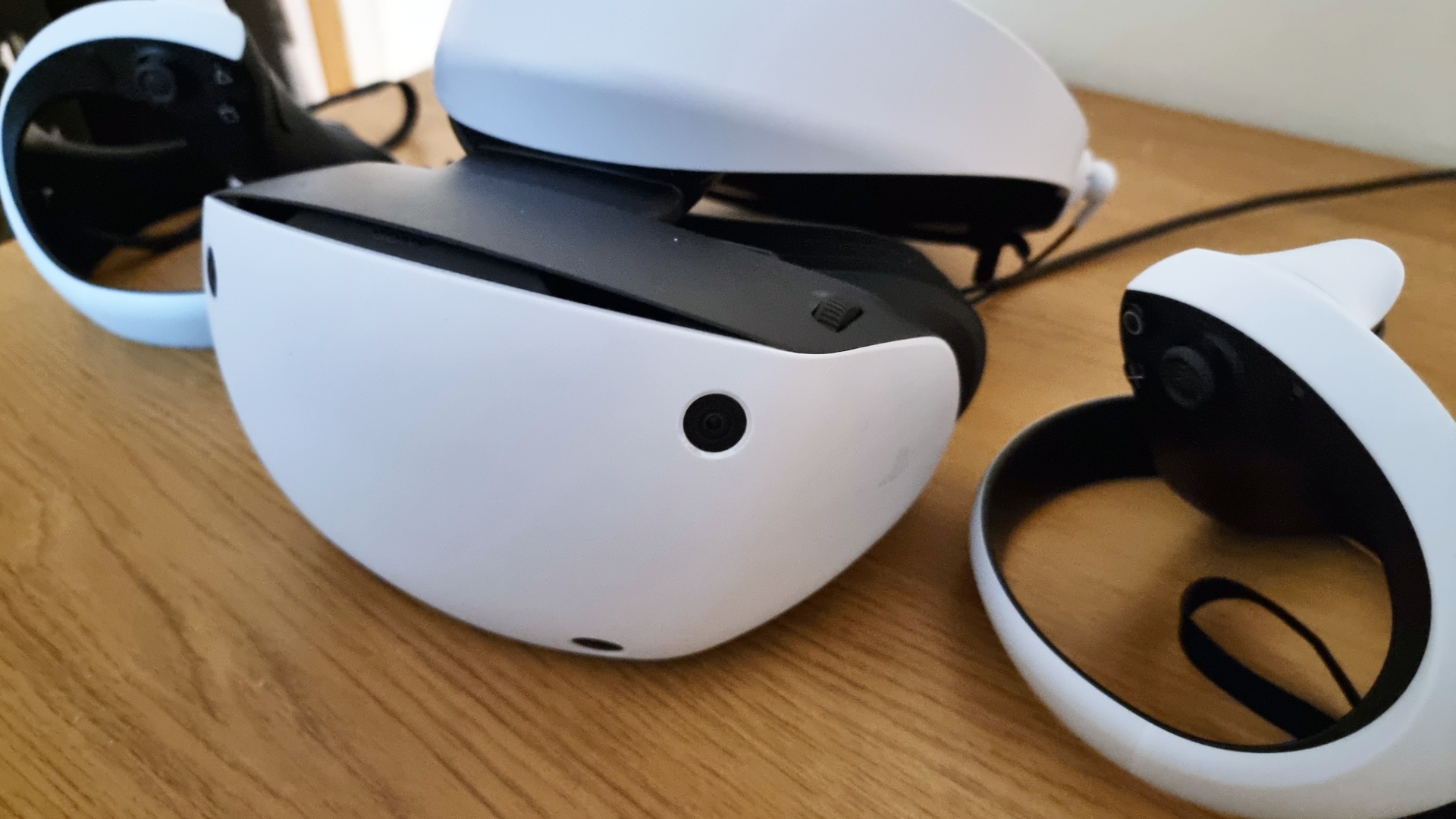
Sony has said that the PS5 Pro’s enhanced graphics will boost and benefit PSVR 2 games greatly. However, I haven’t had the chance to test PSVR 2 with the PS5 Pro yet but will be updating this review, as and when I get the chance to fully explore this. Sony's blog post running down the list of enhanced games at the PS5 Pro's launch did include Kayak VR: Mirage, however, so we're hopeful of some tangible benefits to PSVR 2 gaming.
As well as making non-enhanced PS5 games look even better with the hardware giving them a boost, the PS5 Pro does include a new, dedicated boost mode of sorts for PS4 games: you can enable an option to enhance image quality for PS4 games.
The games do look great on PS5 Pro, but I have struggled to really pick out clear differences and upgrades, and have often found myself reaching for highlights and really peering to see what might be different or enhanced. I’ll continue testing this with more PS4 games to see if there’s anything definitive but it’s not quite clear what the setting does right now. I tried this with Doom, Call of Duty Modern Warfare, Infamous Second Son, Dishonored 2, Red Dead Redemption 2, and Days Gone.
The PS5 Pro features a 2TB SSD which allows so much more breathing room in terms of storage. For reference and as an example of what the boost means in real or day-to-day terms, I had 17 games installed - from 11.6GB Astro’s Playroom to the 130GB Horizon Forbidden West - and still had 353GB of space left to use.
There’s also more storage on the SSD by default: whereas the original PS5 only had about 667GB free to use from its 825GB SSD (80% of the drive), the PS5 Pro allows you to use 1.89TB of its 2TB drive, which is 94.5% of the drive. This is excellent and helps to provide a storage situation where you may not even need a PS5 SSD that you once previously did. With 1TB SSDs costing just north of $100 / £100, broadly speaking, this extra capacity upgrade is not inconsiderable.
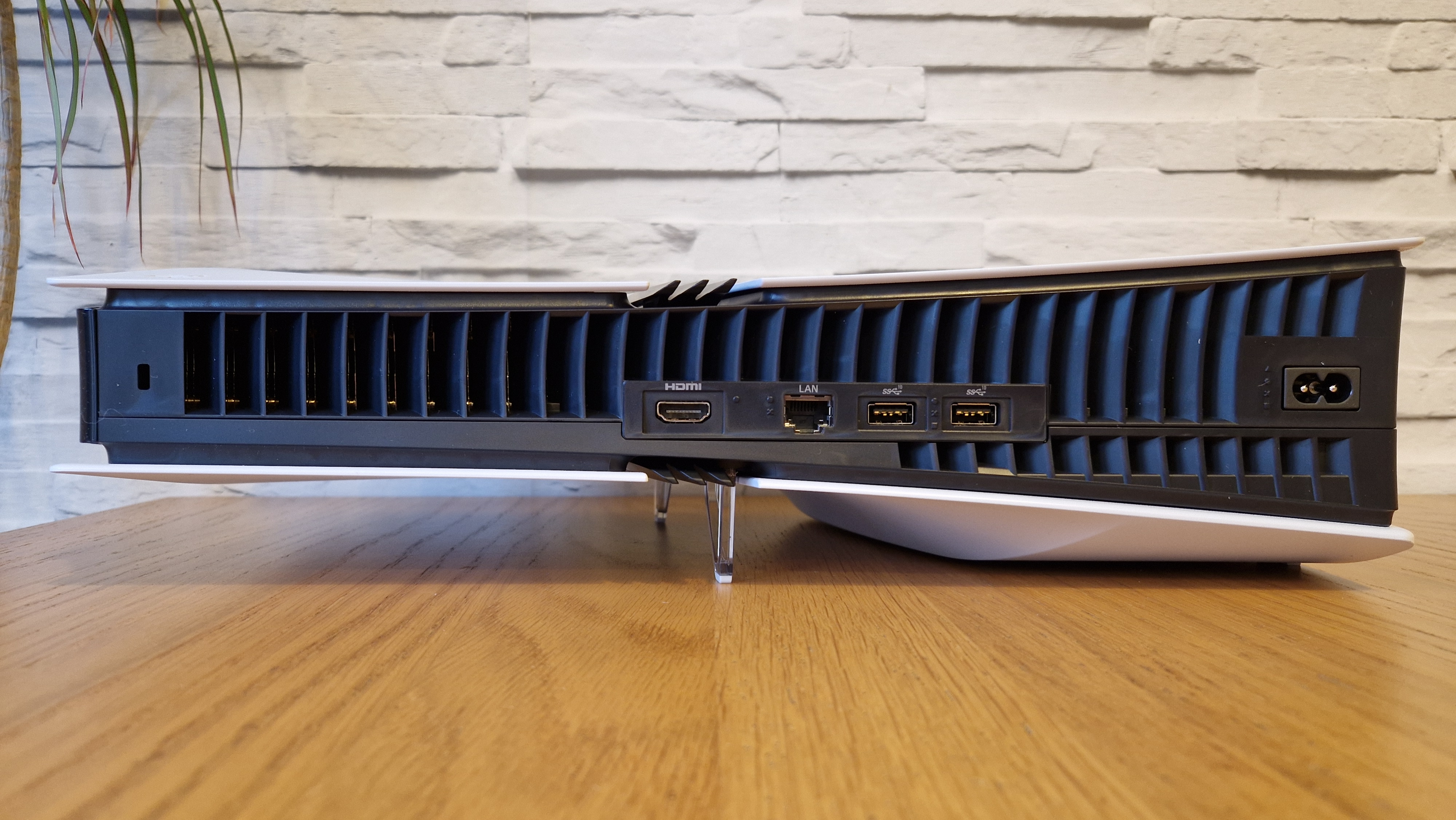
Wi-Fi 7 is a welcome inclusion too and I definitely experienced quicker and more stable download speeds and connection to my PlayStation Portal on my home internet. Your mileage may vary depending on the quality of the internet, but it should represent improvements across the board given the upgrade.
The day-to-day gaming performance of the PS5 Pro is, all in, a joy to behold and use in action. PSSR works wonders and provides a brilliant experience by blending the best of fidelity and performance modes. While I have found the upgrades tremendous so far, I also recognize that such changes are largely subtle and aren’t revolutionary - as a result, I can still see most PS5 owners sticking with their launch or PS5 Slim models.
But for folks like me who have a keen eye for detail and performance, the results are terrific and wholly worthwhile. If the new hardware continues to be embraced by devs, the PS5 Pro could set the standard and be the definitive way to enjoy the rest of the PS5 generation - and also hint at where the PS6 could take things when it comes along.
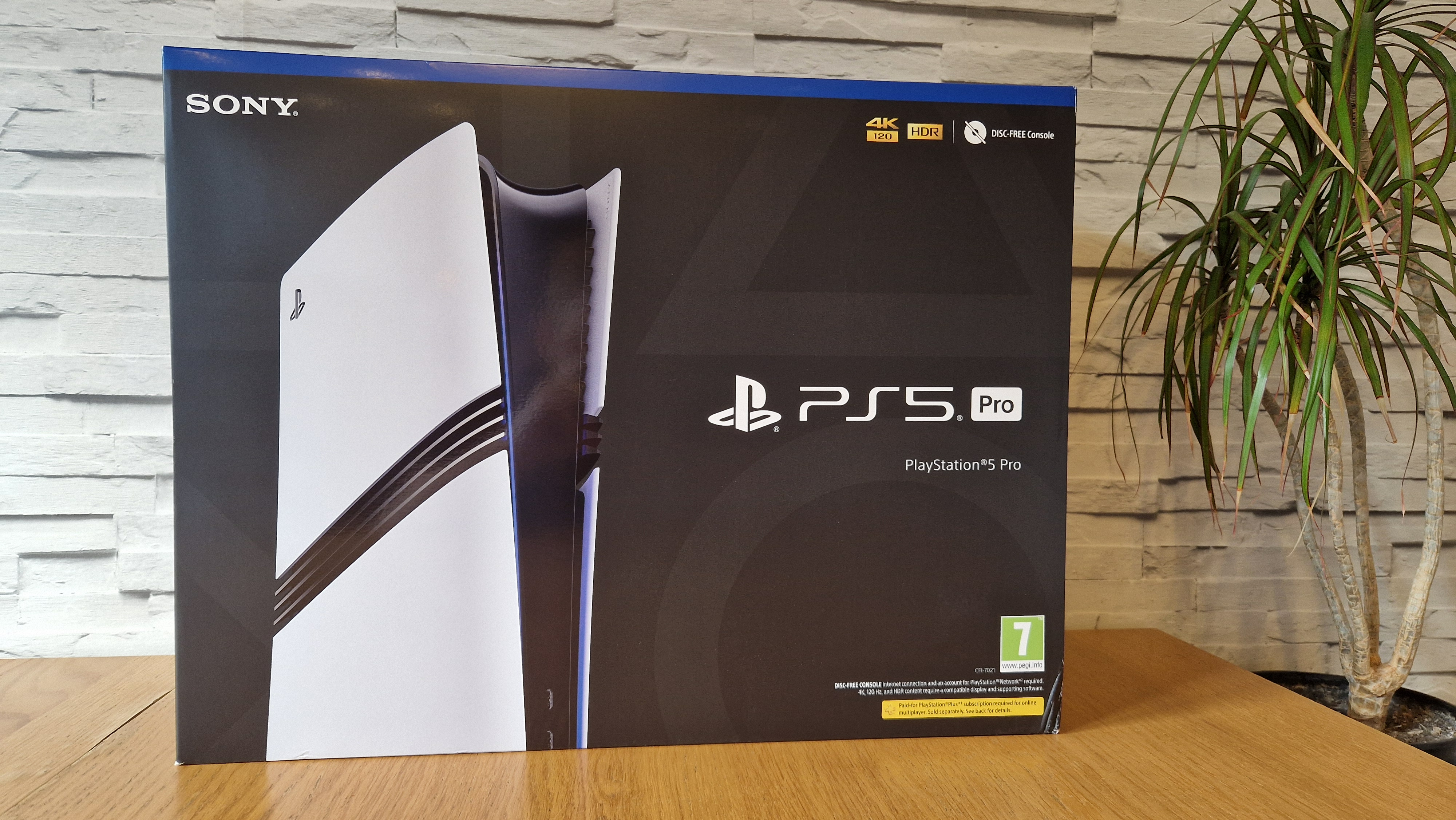
Should you buy the PS5 Pro?
Buy it if...
You’ve always wanted fidelity and performance modes at the same time in games
One key reason the PS5 Pro exists is to prevent folks from having to choose between quality and frame rates - and it absolutely succeeds in offering that with ‘Pro’ performance modes now offering both, in particular.
You want the latest advancements in console gaming tech and ray tracing capabilities
The PS5 Pro’s advanced ray-tracing combined with the wizardry of PSSR and its beefier graphics card means the console offers the very latest tech going on consoles - and boy does it show, with all three combining to make superb gaming experiences.
You have got or are going to get a 120Hz TV or monitor for gaming
The PS5 Pro on a non-120Hz display still makes games look and play amazing, but if you’ve got or are getting a 120Hz HDMI 2.1-specced display for gaming then the benefits increase and the enhancements get even more tangible.
You’re a PlayStation fan and want the most performant PlayStation console going
Simply put, many PlayStation fans will always want the best PlayStation experience that’s available - a totally legitimate position and one that the PS5 Pro offers. Such fans who adopt the Pro will not be disappointed with its performance.
Don't buy it if...
You’d want maximum value from a graphical upgrade
While tangible, PS5 Pro’s graphical upgrades are more subtle and evolutionary rather than groundbreaking so the price tag of the Pro is a very hard one to swallow. If you’re hoping for something more groundbreaking for $700 / £700 then the Pro isn’t quite offering that and the better value option is the original PS5 or the PS5 Slim.
You already have a PS5 and are totally satisfied with the experiences it provides
If you already have a PS5 Slim or launch model, enjoy the exciting experiences it provides, and aren’t one to strive for higher numbers than those you have already then you can likely skip the PS5 Pro and stay as you are.
Also consider
If you're not totally sold on the PS5 Pro, then here are some other consoles to consider by comparison.
| PS5 Pro | PS5 Slim | Xbox Series X | Nintendo Switch | |
| Price | $699.99 / £699.99 / AU$1,199 | $499.99 / £479.99 / AU$799.95 | $449.99 / £429.99 / AU$699 | $259.99 / £259.99 / AUD$435 |
| Dimensions (WxHxD) | 15.2 x 3.5 x 8.5in / 388 x 89 x 216mm | 14.1 x 3.8 x 8.8in / 358 x 97 x 224mm | 5.9 x 5.9 x 11.9in / 151 x 151 x 301mm | 4 x 9.4 x 1.1in / 102 x 239 x 28.7mm |
| Weight | 6.8lbs / 3.1kg | 7.1lbs / 3.2kg | 9.8lbs / 4.5kg | 0.9lbs / 398g (with Joy-Con attached) |
| Storage capacity | Custom 2TB SSD | Custom 1TB SSD | 1TB SSD | 32GB (64GB on Nintendo Switch OLED) |
| Storage expansion | M.2 NVMe SSD slot; external storage via USB | M.2 NVMe SSD slot | Storage card expansion slot | Compatible microSD cards |
| Connectivity | WiFi 7, ethernet, Bluetooth 5.1 | WiFi 6, ethernet, Bluetooth 5.1 | WiFi 6, ethernet | WiFi, Bluetooth 4.1, (ethernet on Nintendo Switch OLED) |
| CPU | 8-core / 16 thread AMD Zen 2 | 8-core / 16 threads, AMD Zen 2 @ 3.5GHz | 8-core @ 3.8 GHz (3.6 GHz w/ SMT) Custom Zen 2 | Nvidia Custom Tegra processor |
| GPU | 16.7 TFLOPs, AMD Radeon, RDNA-based graphics engine | 10.28 TFLOPS, AMD Radeon, RDNA-based graphics engine | 12 TFLOPS, 52 CUs @ 1.825 GHz Custom RDNA 2 GPU | Nvidia Custom Tegra processor |
| Memory/RAM | 16GB GDDR6 / 2GB DDR5 | 16GB GDDR6 | 16GB GDDR6 | 4GB LPDDR4 |
| Upscaling | PSSR (PlayStation Spectral Super Resolution Upscaling) | N/A | Some FSR-compatible games | Some FSR-compatible games |
| Ports | 1 x HDMI 2.1, 1 x Ethernet, 2 x USB-C, 2 x USB-A | 1 x HDMI 2.1, 1 x ethernet, 2 x USB-C, 2 x USB-A | 3 x USB-A, 1 x HDMI, 1 x power, 1 x ethernet, 1 x storage expansion | 1 x HDMI, 1 x USB-C, 1 x 3.5mm headphone jack, 1 x microSD card slot (1 x ethernet on Switch OLED) |
PS5
The PS5 (Slim or launch model) is still a brilliant games console and will provide wonderful gaming experiences. If you’re not a graphics obsessive or someone who desires the most power and capability from their PlayStation console then the PS5 is a brilliant console in 2024.
For more information, check out our full (original) PS5 review, and our full PS5 Slim review.
Xbox Series X
Microsoft’s full-fat current-generation console is a fine machine on the other side of the console divide, and offers its own suite of specs, experiences, and games, especially through Xbox Game Pass. If you’re on the lookout for a home console that will offer the best graphical experience for the enormous game library on this side of the canyon, then this is the machine to go for.
For more information, check out our full Xbox Series X review.
Nintendo Switch
Although rumors of a successor rumble on, the Nintendo Switch is arguably the best handheld home gaming console, which sets it well apart from the likes of the PS5 Pro. If you’d been eyeing up a handheld games console next, rather than a mid-generation upgrade, then the Nintendo Switch is a great option to consider.
For more information, check out our full Nintendo Switch review and our full Nintendo Switch OLED review.
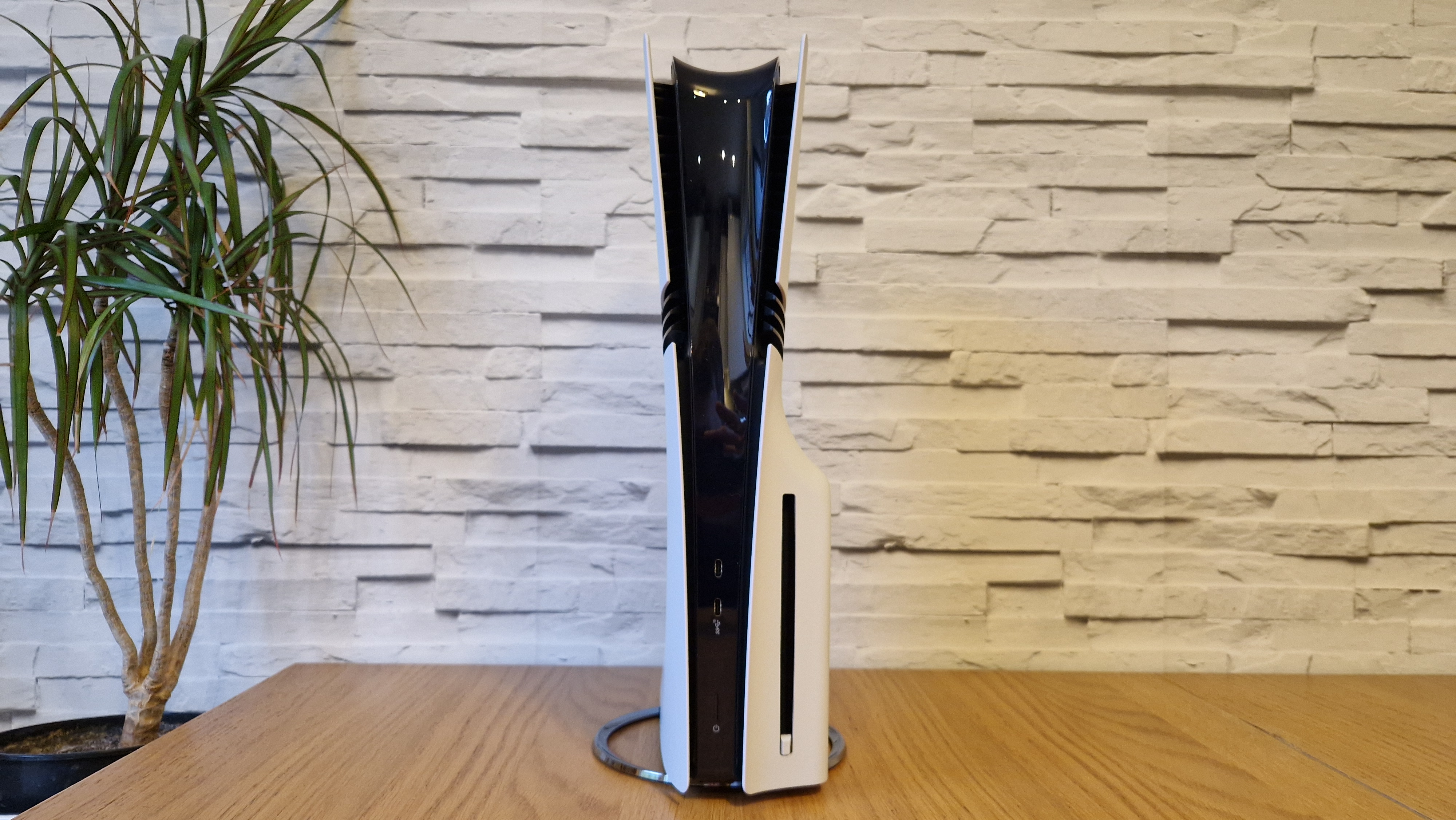
How I tested the PS5 Pro
- Tested for many hours a day for around a week, playing and running a range of games
- Compared design, build, features, and performance directly to PS5 Slim and launch PS5
- Tested download speeds, transfers, load times, and gameplay improvements
I tested the PS5 Pro for about a week for review. I installed nearly 20 games from both my PS5 and PS4 libraries on it and compared them running on the PS5 Pro to my standard PS5 console. I spent hours observing how the games looked and performed in all modes - and tinkered with settings - on the PS5 Pro compared to the PS5 which allowed me to spot differences between the two consoles.
Comparisons between the models didn’t stop at games, however, as I also compared the PS5 Pro on a physical level to the PS5 Slim and base PS5 launch model, looking at physical appearance, dimensions, weight, footprint, taking console covers off and reapplying them, adding an M.2 SSD, port arrangement, using it both vertically and horizontally, testing noise pollution, as well as observing download and install speeds and testing connectivity through Wi-Fi and ethernet.
I also, simply, used it as my daily gaming platform, playing a variety of games, both single-player and online, browsing the menus and engaging with different settings, moving games and apps from storage locations, and more.
I used the PS5 Pro on both a gaming monitor and TV for testing; the former being an Acer Predator X32Q FS 4K screen that offered a quality screen to test the Pro’s 120Hz capabilities, and the latter being a Samsung Q6F QLED 4K TV, enabling me to test it with a non-120Hz display.
In terms of complementary gear and accessories, I tested the PS5 Pro with the SteelSeries Arctis GameBuds the Sony Inzone H9 headset, the Steelseries Arctis Nova Pro Wireless, multiple DualSense controllers, a Sabrent Rocket 4 Plus PS5 SSD, a Crucial X8 external hard drive, and a PlayStation Portal.
First reviewed November 2024

Rob is the Managing Editor of TechRadar Gaming, a video games journalist, critic, editor, and writer, and has years of experience gained from multiple publications. Prior to being TechRadar Gaming's Managing Editor, he was TRG's Deputy Editor, and a longstanding member of GamesRadar+, being the Commissioning Editor for Hardware there for years, while also squeezing in a short stint as Gaming Editor at WePC just before joining TechRadar Gaming. He is also a writer on tech, gaming hardware, and video games but also gardens and landscapes, and has written about the virtual landscapes of games for years.
